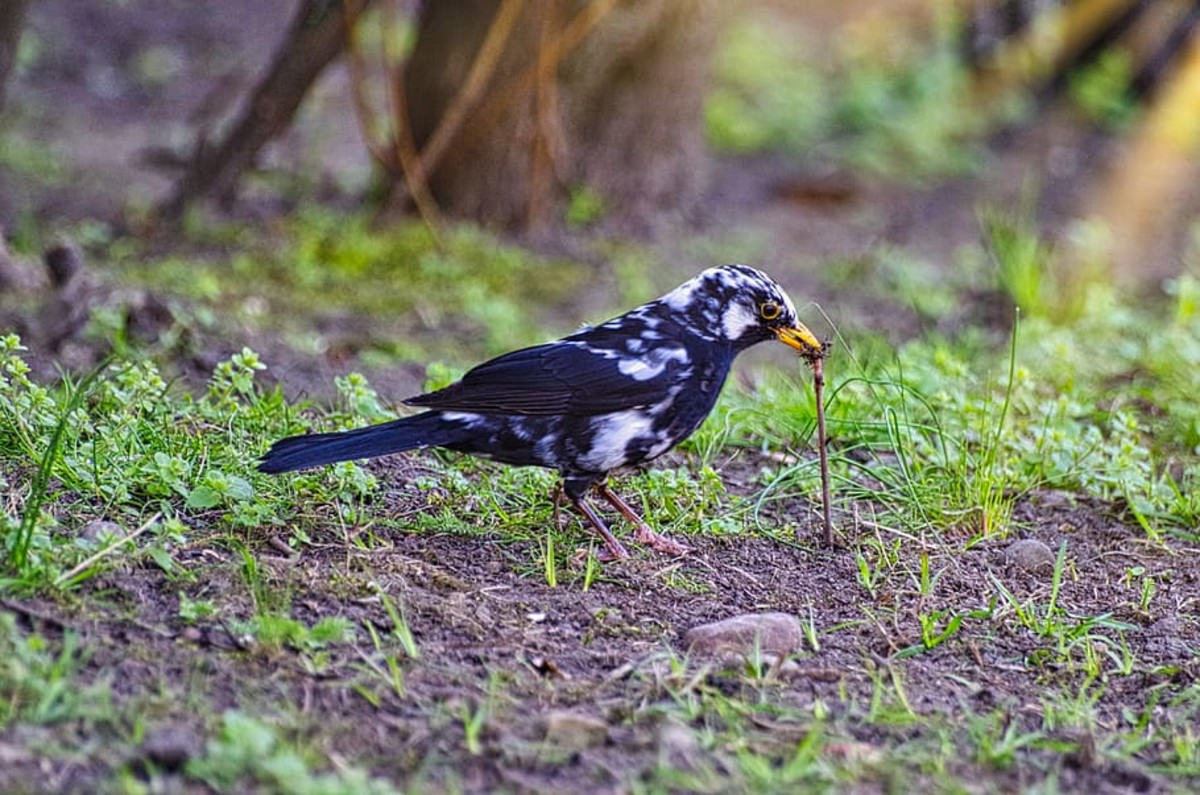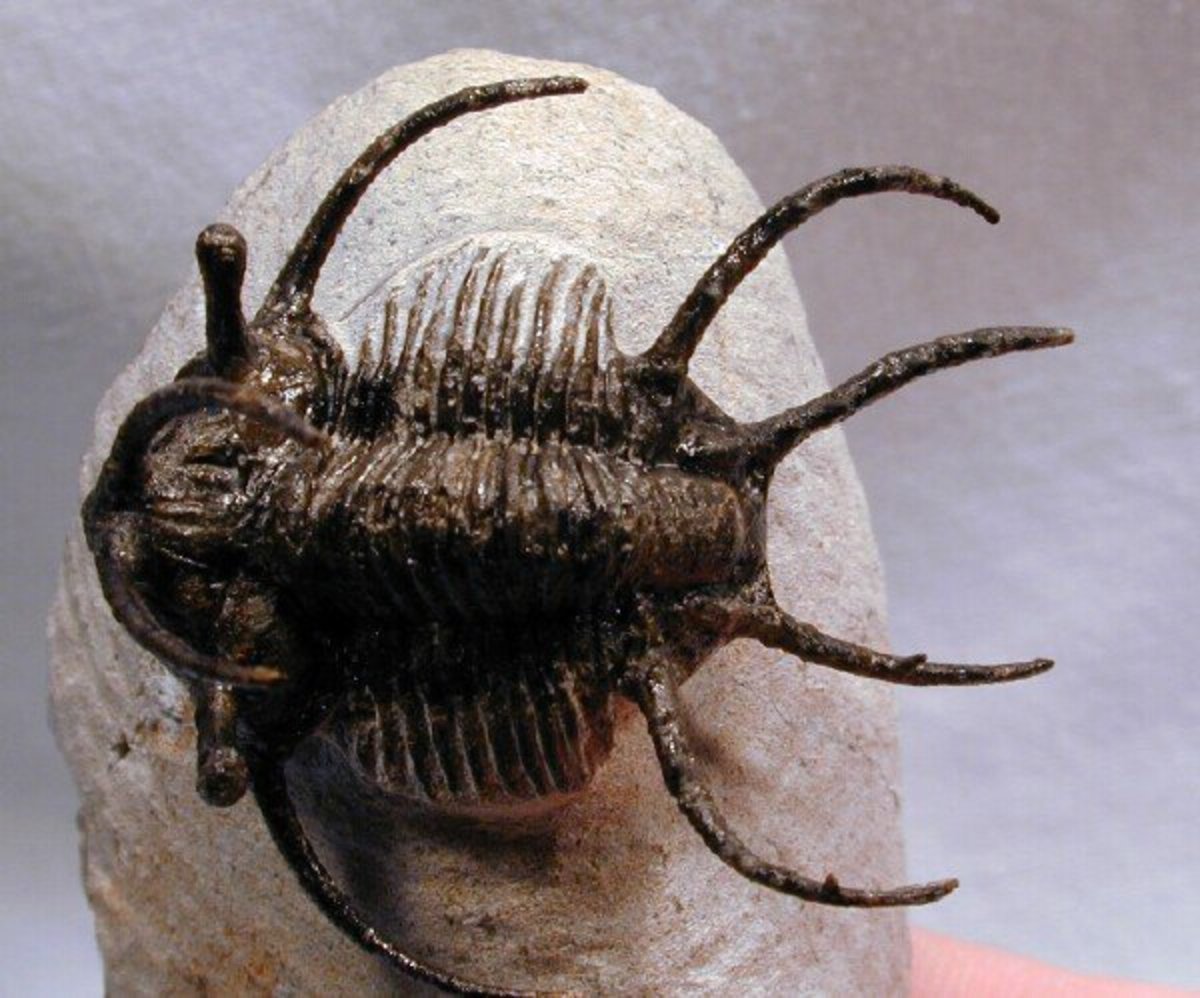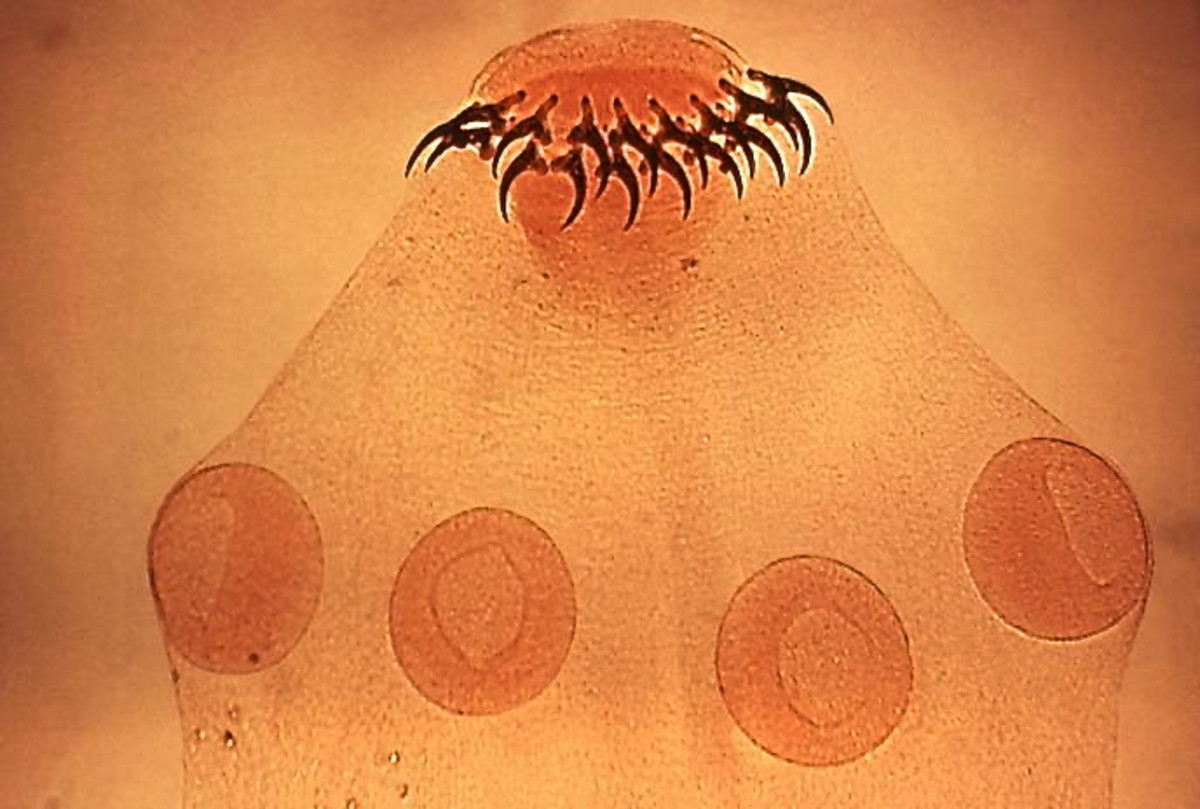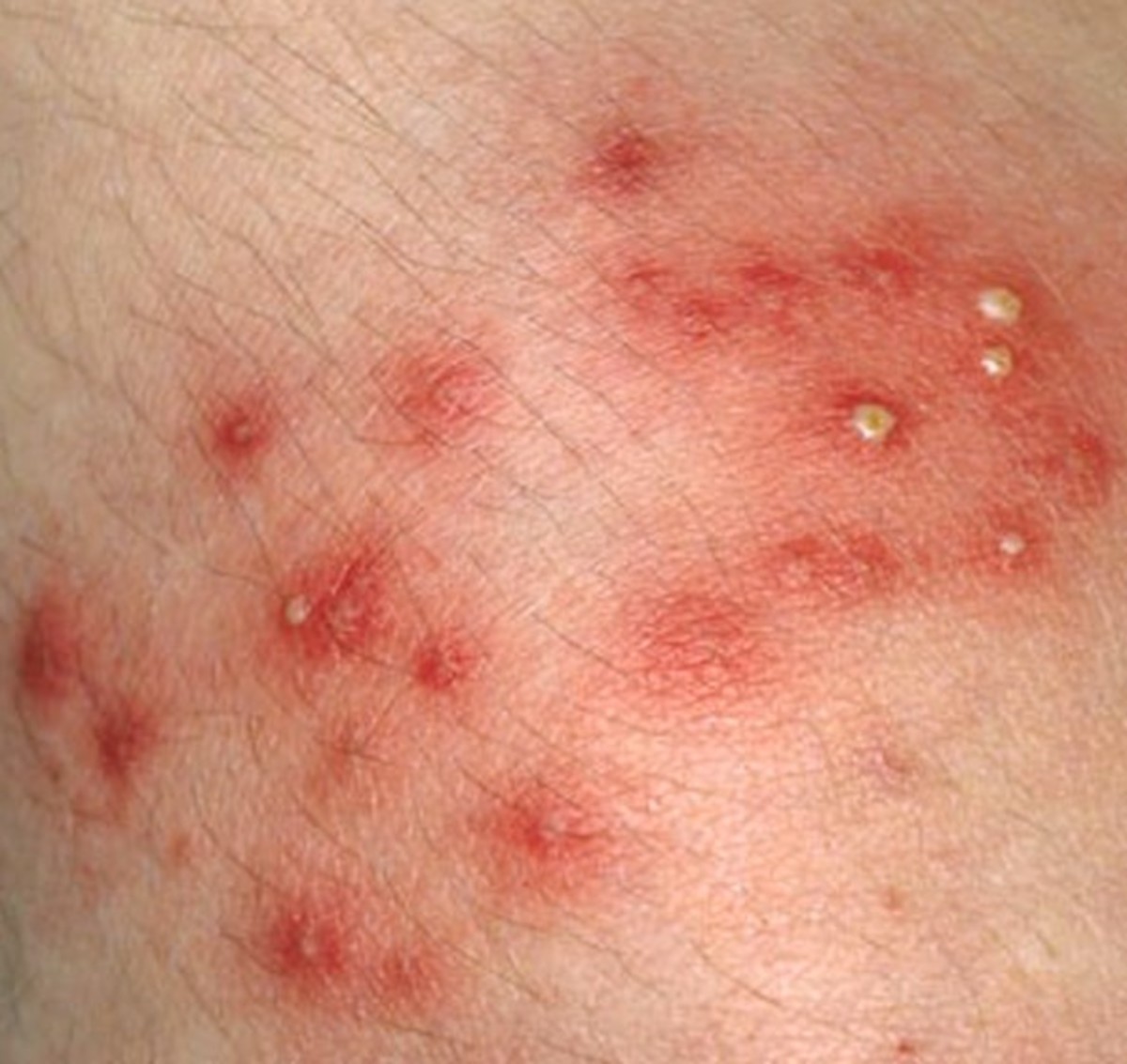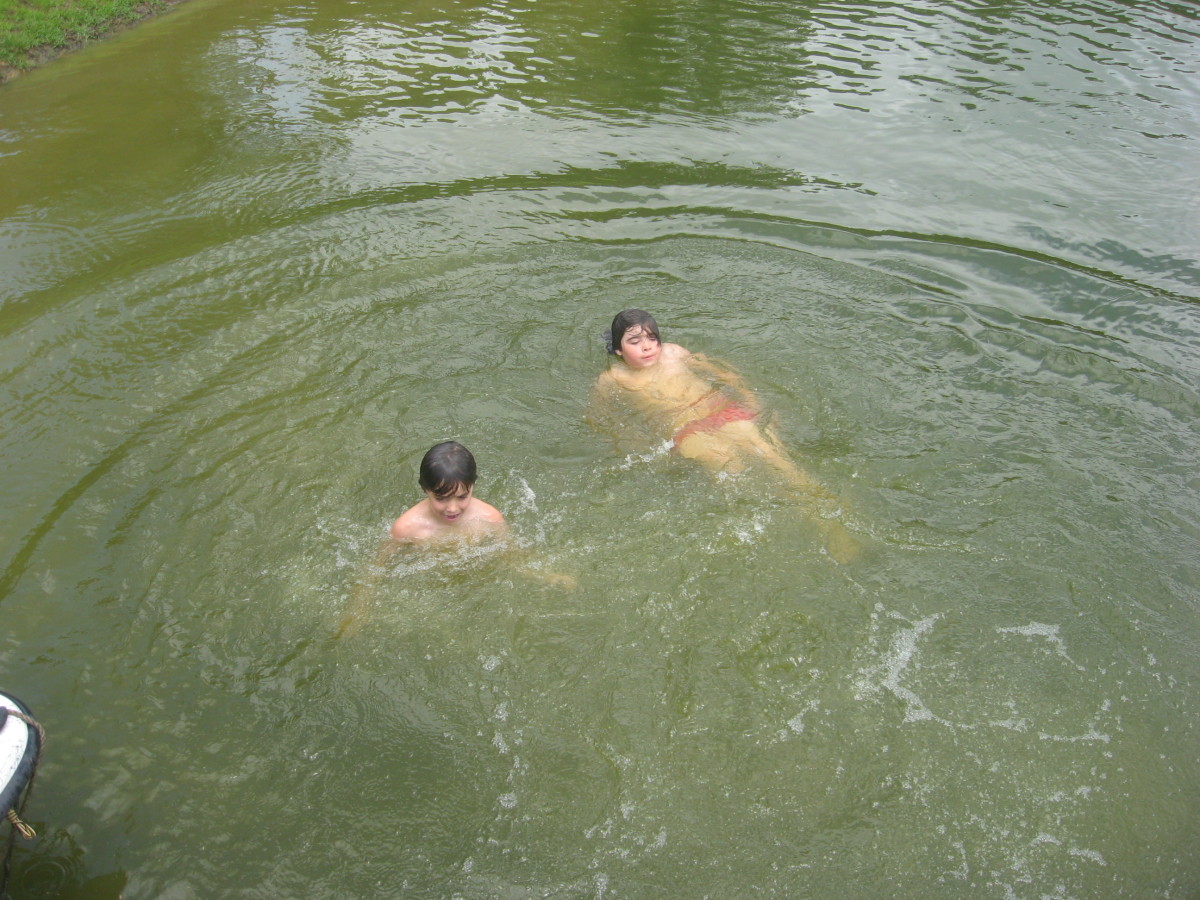Parasites: Nature's Strangest of All Creatures
Where Did Parasites Come From?
Parasites are nature's strangest, creepiest and nastiest of all creatures.. Parasites have been around for thousands, and perhaps, even millions of years. Where did they come from? Parasites must have evolved and formed along with everything else through time. The word parasite broken down means beside and wheat. Parasites are the ones that eat at the table of others. Parasites live at the expense of other organisms like humans and animals. Parasites are internal and external. The internal and external parasites are categorized into two main types: Endo-parasite and Exo-parasite. Lice, fleas, mites belong tp the exo-parasite group. The helminths (worms) are the internal parasites,belonging to the endo-parasite group. There are internal parasites that are one-celled microscopic organisms. Internal worms can be seen and are macroscopic, although there are some types of worms that are difficult to see, and may need the use of a microscope. Tapeworms are easily seen, and can grow to great lengths. Tapeworms begin to shed segments that are matured when they are in the adult stage of their life cycle. The segments break off at the end of the worm, and find their way out of the anus to the outside world. Segments are filled with eggs waiting for opportunities to infect new hosts. Epi-parasites are parasites that feed on other parasites.
A Photo of an Adult Tapeworm

What are Parasites and Their Origin
Parasites are internal and external living organisms that live in or on other living organisms, such as humans and animals. Parasites have infested humans and animals ever since they originated.. Where did parasites come from, and how did they come about? Parasites may have been around for millions of years beginning with the dinosaurs, and other animals that existed at the same time. Ancestors of man living today may have been infested with tapeworms(Taenia) more than 10,000 years ago. Researchers may have found evidence of the existence of parasites that goes back to thousands of years ago to early man. Parasites have evolved through time. The tapeworms are the longest parasites, and can grow to longer lengths in the largest of animals, such as whales and dolphins. Tapeworms in whales grow up to a hundred feet long.
When the early ancestors hunted for food (meat), they hunted for animals, such as antelopes. Antelopes are bovid animals with hollow horns. Bovid animals are ruminants that have hollow horns, but the horns are not branched like the horns of a deer. Antelopes, oxen, sheep and goats are all examples of bovid animals. Early man may have become infested with tapeworms after consuming raw or undercooked meat of bovid animals early in Africa. The parasites used bovid animals as an intermediate host, and then, waited for opportunities, such as the early man eating raw or undercooked meat. The parasites would infest early man, where they could grow into their adult stage, and reproduce themselves. An adult tapeworm is able to inseminate itself. Tapeworms are hermadites, which means that they are able to self-inseminate, and they don't need another member of their species to reproduce. Tapeworms will reproduce with other tapeworms that are available, rather than inseminating themselves.
A Head Louse and An Adult Flea
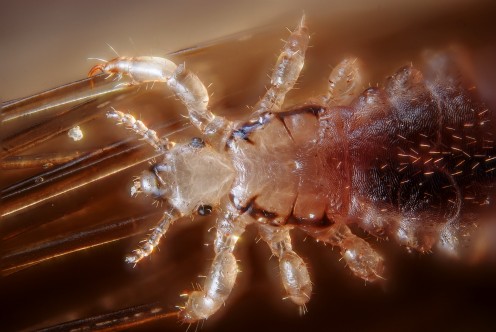
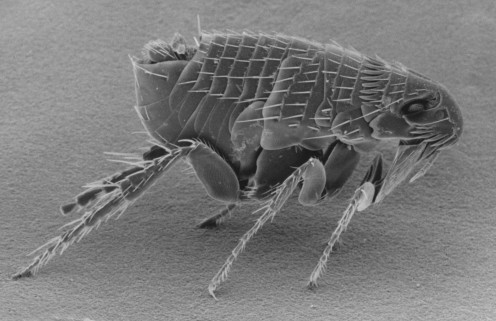
Parasites and Other Organisms
Parasites are organisms which live on or in other organisms like humans and animals. Exoparasites are the mites, fleas, ticks and lice that attach and live on the outside of the bodies of animals and humans. Endoparasites are parasites that live inside the bodies of other organisms, such as humans and animals. An endoparasite can be microscopic(unseen) or macroscopic(seen). Endoparasites include the worms that are,also, known as helminths. There are many species and different types of worms, which have a lot in common, but some life cycles of worms are different from other types of worms. Some worms need different hosts for the various stages of their life cycle. Other worms do not need different hosts for all of their life stages in their life cycles. The tapeworm does need an intermediate host, such as the flea, which is swallowed by a cat or dog, and then, the worm uses the flea to get inside the cat or dog as the opportunity arises. The tapeworm lives in the cat or dog and grows to become an adult. Some parasites can directly reinfect the host without using an intermediate host.
Parasite (Worm) eggs, and/or larvae may be swallowed, or ingested in a number of ways, such as the eating of undercooked meat, eating vegetables that may have been contaminated with animal feces that contained worm eggs, etc...Another way parasites can enter into another organism is through injection. The mosquito is an insect that is known to carry malaria, and other diseases like heart-worm. The mosquitoe's bite transmits the malaria parasite. The mosquito also carries heart-worm disease. If a dog or cat swallows a mosquito, they develop heart-worm disease, especially if they are not taking preventative measures, and especially, in areas of the world where heart-worm is most prevalent.
Parasites in the News
Hong Kong Health officials warn its citizens not to use worms and worm eggs as slimming aids. There was reportedly Chinese websites selling products that contain worms and worm eggs for slimming aids. The worms in question are giant roundworms (ascaris) that are tropical and are large. The giant tropical ascaris roundworm is an intestine dwelling parasite that is highly dangerous and causes diarrhea, vomiting, pain, and can be fatal. These worms can cause obstruction of the intestinal tract, biliary tract, and pancreatic duct. They can invade other organs, such as the lungs. The worms leech important nutrients, they release harmful toxins into the body, and they can be difficult to get rid of. There is no evidence to prove that these worms are an effective weight loss technique. Eating parasite worms or their eggs is not recommended for losing weight. This is the newest diet fad in Hong Kong. The idea was that the worms would eat the food, so that the dieter could lose weight and be thin. Eating parasites (worms and worm eggs) is never recommended and is extremely dangerous.
Parasites: Tapeworm
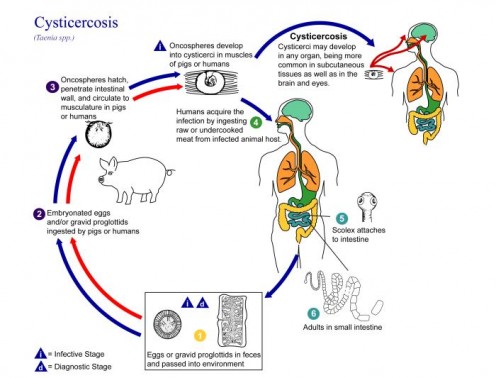
Parasite Museum-Only One Dedicated to Parasites
Dangerous Parasites
Parasites are dangerous and unhealthy. People see them as low and disgusting. They live a disgusting lifestyle. The parasite worms are, also, known as "Helminths." Worm parasites are seen as disgusting and awful. There are many species of worm parasites in existence, that have not even been classified as yet. The most common worm parasites are: tapeworms, roundworms, pin-worms, whip-worms, hookworms, guinea worms, and eye-worms. Ring-worm is not a worm parasite. Ring-worm is caused by a fungus. There are more parasites on Earth, than there are non-parasites. The tapeworm really doesn't have a head. The part where the head would be is called the scolex. The scolex had suckers, which attach to the walls of the intestine, and the worm grows outward to form segments. The segments grow larger as they mature. The tapeworm gets longer and longer, and then, segments start to break off, and exit out of the host to infect other organisms, and to repeat their life cycles over and over again. In the photo of the tapeworm the part where the head would be is small. The tapeworm's body gets larger and larger the farther away the segments get from the head (which is called the scolex), which isn't actually a head. Tapeworms don't have brains, no alimentary canal of their own, and no blood system.


